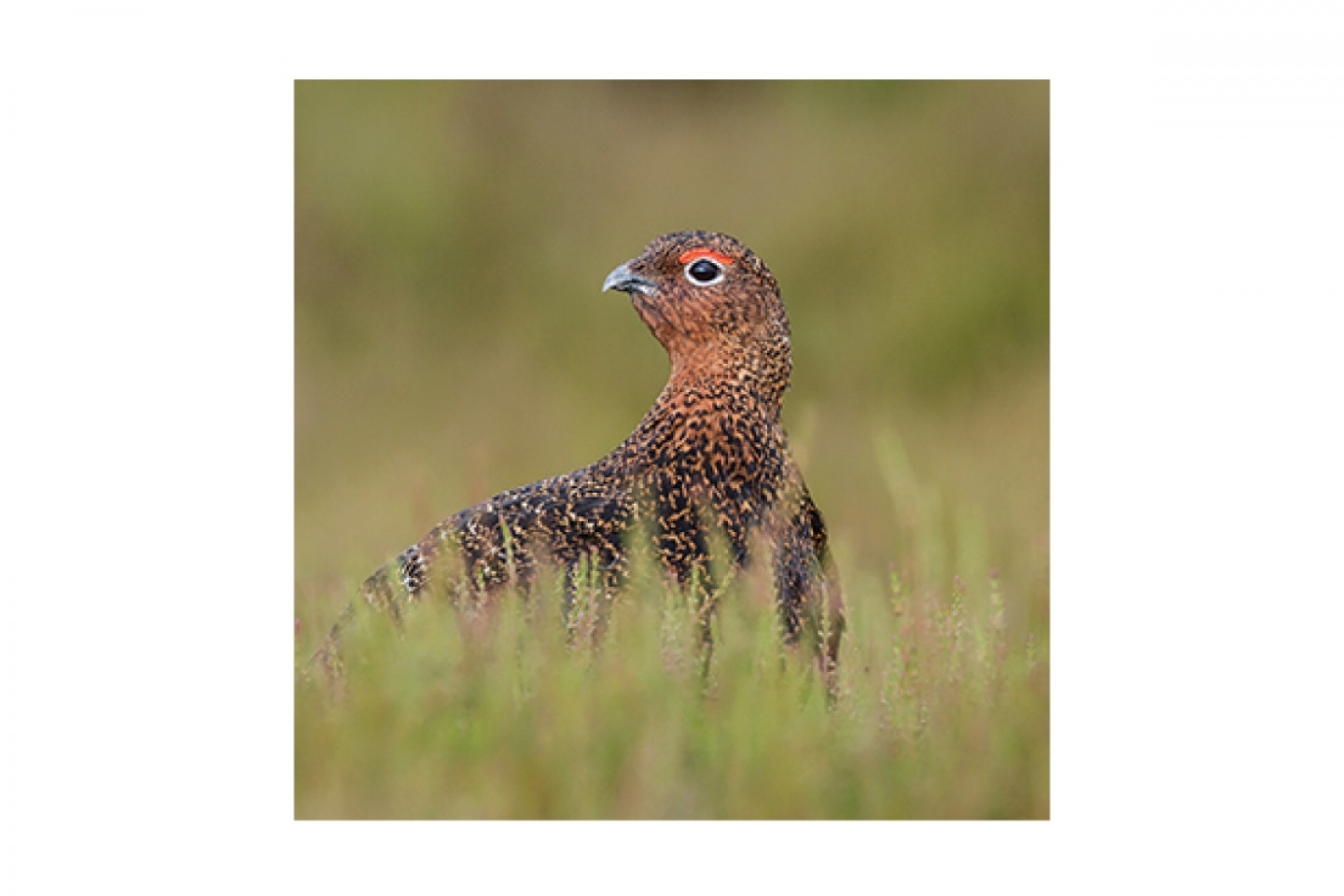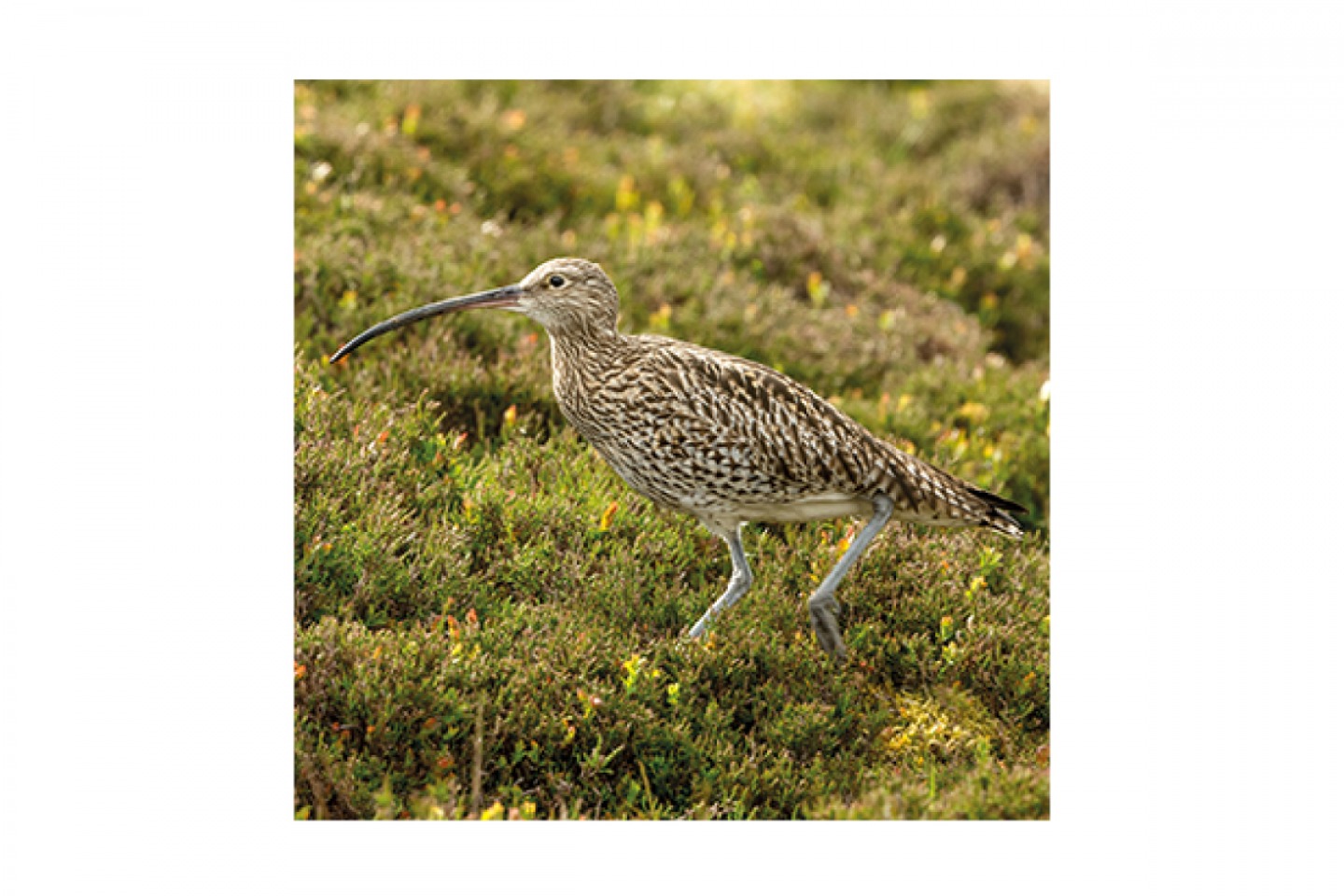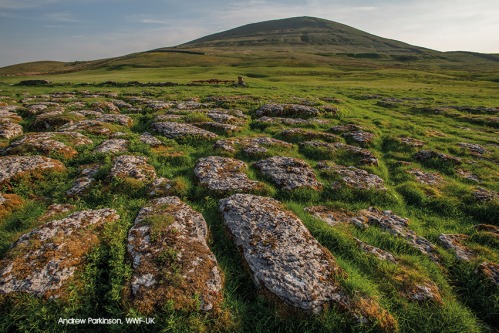Making Ingleborough Wild Again

In the heart of the Yorkshire Dales, a visionary landscape project is set to showcase an alternative future for Yorkshire’s uplands
Partners including Yorkshire Wildlife Trust, WWF, Natural England, the University of Leeds, the United Bank of Carbon and The Woodland Trust have all come together to restore this iconic area of the Yorkshire Dales. Over the next 12 months it will be transformed into a nature-rich haven, with a variety of rare flora and fauna set to benefit from the restoration of their natural habitats.
Ingleborough is the second highest of the Yorkshire Three Peaks and the landscape includes swathes of bare limestone pavement and heavily-grazed pastures. However, sadly the reality is that the Ingleborough area is not as wild as it should be. Over the years it has lost its rich diversity. But, as one of the first projects of its kind, the Wild Ingleborough project hopes to reverse that trend through a range of initiatives such as creating more than 40 hectares (400,000 square metres) of new native woodlands. Half of the new woodland will be created by planting 30,000 trees, whilst the other half will be created though natural regeneration.
Working closely with local landowners, farmers and members of the community, the team behind this visionary landscape project hope to share knowledge of nature conservation, land management and low-intensity farming practices. This important venture will not only benefit the wildlife and landscape, but visitors to Ingleborough as well. Another benefit is that planned restoration of peatlands and the expansion of native woods and scrub will remove and store carbon, helping to tackle the climate emergency.

Having already planted 3,000 native trees, including rowan, hawthorn and hazel, the Wild Ingleborough project hopes to re-establish where the natural tree line was. ‘The vision is to restore the landscape to what it might have looked like 50 to 150 years ago,’ Paul Brady, Stakeholder Development Officer of the Wild Ingleborough project tells us. When we think of native woodland, we often think of dark, dense wooded areas, however Ingleborough would have been much more open. ‘Large herbivores such as wild cattle and deer would have made sure the trees didn’t get too tall or too dense, and therefore there would have been a lot more room for flowers and plants, as well as the associated butterflies and insects that go with them,’ Paul says.
The restoration is already taking place, as the first phase of the project is well underway. Over the next couple of months, other investments such as protection against flooding will be carried out. Rivers that run through Ingleborough have naturally become straighter over time, which results in landscape floods, because when heavy rainfall hits the water, speed and current increases. ‘Slowing down the flow of water into the rivers reduces the peak flood impact that you often get from the heavily-impacted short grasslands,’ explains Paul.
It is hoped that what should be a patchwork of diverse landscape and wildlife will be restored naturally, although woodland areas will have to be helped through projects such as tree planting. The team behind the project hope to focus on plants that have suffered from disease, such as juniper, coniferous trees and shrubs. Birds-eye primrose, globeflower and nine other species of fern that can be found in the surrounding areas will also take priority. By aiding nature’s recovery, this pioneering project hopes to protect more than just the landscape and rare flora and fauna within the area – wildlife-friendly habitats are also in need of protecting and preserving.



‘We want to keep track of what we’re doing to make sure it is having the right impact within the first year of the project,’ says Paul. By monitoring the scientific parts of the project, the team will be able to see the effects it is having on the landscape. ‘Some results won’t pay off for five or 10 years, maybe longer,’ Paul continues, ‘but we are hoping to see some changes based on the work we are doing within the first year.’ Already, the Wild Ingleborough team have seen positive outcomes such as a bounce back in some rarer flowering species in heavily-grazed fields.
Monitoring of birds, butterflies and vegetation states will also take place. Black grouse, red squirrels, cuckoos and curlews can also be found within this area. However, curlews are of the most concern because there are currently only two pairs within the project area. ‘These birds are migratory, and they need the right kind of habitat and if they don’t get it, they won’t settle,’ Paul explains. ‘Once population numbers get below a certain level, a species population can crash. We have seen curlews die out in North America, and we don’t want that to happen to our own curlews that find home in our area,’ he continues. ‘It is therefore important to act now before it is too late.’

Wild Ingleborough hopes to be a visionary project that puts Yorkshire at the forefront of the UK’s large-scale restoration efforts, and although work has already begun, the team of partners are looking for volunteers to help with large amounts of the work taking place. ‘We really want to bring the community with us along our journey of restoring great amounts of biodiversity back into the landscape,’ Paul says. Due to the impact of the global pandemic, many of us have paid greater attention to the green spaces around us and come to appreciate nature once more. ‘I think we have seen over the last few years, particularly within the last year, that people are taking notice and are becoming frustrated with the current climate condition, so they want to take direct action,’ Paul tells us. ‘People have become more drawn to nature, and what were once perhaps areas we commuted through, have become areas we wish to protect.’
Through its pioneering efforts, the Wild Ingleborough project hopes to improve the landscapes and restore rich biodiversity in the area. This partnership of six organisations is a great example of how combining forces can achieve greater results, and by working with local landowners to expand knowledge of low-intensity farming practices, the Wild Ingleborough team are hoping to make a positive impact on climate change and prevent further nature loss. ‘We believe that we can still make a difference,’ says Paul.
If you’re interested in getting involved with the Wild Ingleborough project, register your interest by emailing wild.ingleborough@ywt.org.uk







